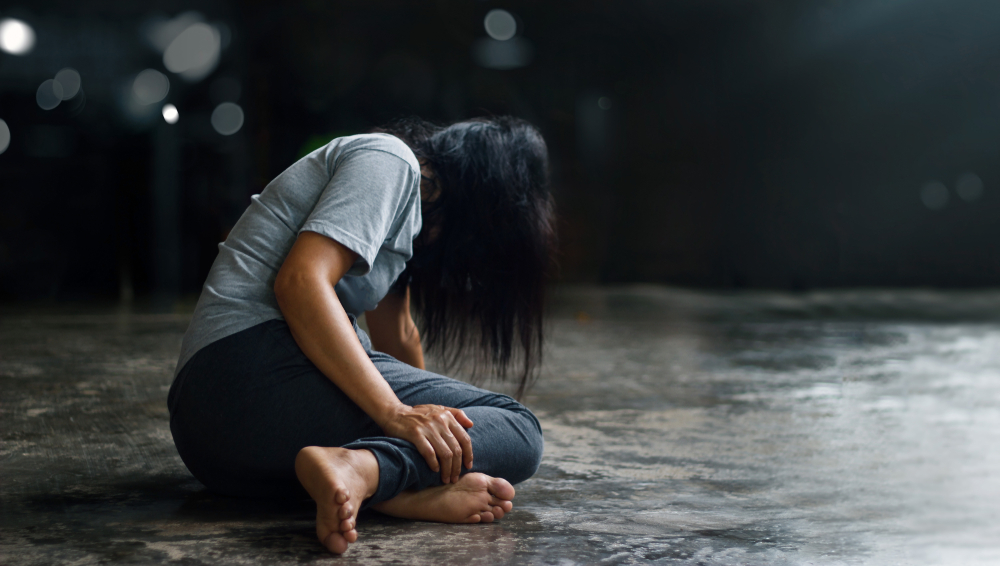
PTSD can be incredibly overwhelming to experience, but please know that you are not alone.
According to the American Psychiatric Association, Post-Traumatic Stress Disorder (PTSD) is a psychiatric disorder that may occur in people who have experienced or witnessed a traumatic event, series of events or set of circumstances. There is no limit to what this event or events can be. Some people may develop PTSD from abusive relationships, betrayal trauma, childhood trauma of all types, natural disasters, etc. I want to be clear that any event, no matter how small, can be traumatic. How each person is impacted by trauma is influenced by the age, onset and length of trauma, one’s brain development, the impact it had on one’s nervous system, and many other factors. If the event was large enough to disrupt your nervous system, it is trauma and can, in some cases, lead to PTSD.

Symptoms of PTSD
Not everyone with PTSD will experience the same symptoms, and symptoms can vary in severity. PTSD symptoms are typically grouped into four groups: Intrusion, Avoidance, Alterations in cognition, and Alterations in physical/emotional reactions. Let’s explore these in a little more depth:
- Intrusion – Intrusion PTSD symptoms typically look like intrusive involuntary memories, nightmares, flashbacks, etc. These are thoughts and images that appear in your head whether you want them to or not, and can be incredibly distressing.
- Avoidance: Avoidance PTSD symptoms include avoiding people, places, and things that may trigger an unwanted memory of the traumatic event.
- Alterations in cognition: Alterations in cognition can look like being unable to remember certain parts, or even the entirety of the traumatic event. Alterations in cognition can also lead to distorted thoughts about yourself and your surroundings. Some may lose interest in previously enjoyed activities and find it hard to experience positive emotions.
- Alterations in physical/emotional reactions: Alterations in physical/emotional reactions can look like angry outbursts, self-destructive behaviors, hypervigilance, and trouble sleeping. Some may also experience difficulty with nervous system regulation.
Treatment of PTSD
Not everyone who has experienced trauma will develop PTSD. If one does develop PTSD and notices that symptoms are negatively affecting dating, relationships, or your overall general wellbeing, there are methods that can be used to treat symptoms. Healing traumas that resulted in PTSD is the first step. Trauma is much more than a story of what happened to you. The feelings, beliefs, and body sensations that you soaked up during the trauma are still very much alive in you – not as memories, but as reactions in the present.
One evidence-based treatment option for PTSD is Eye Movement Desensitization and Reprocessing (EMDR) therapy. EMDR is a form of therapy that helps to reprocess memories, images, beliefs, feelings, and body sensations safely. The goal is to take advantage of our brain’s ability to rewire, also known as Neuroplasticity, to rewrite memories with self-awareness and new positive associations. EMDR works by using bilateral stimulation. Usually done by guided eye movement, tapping, or pulsing; these techniques activate both sides of your brain, further aiding in reprocessing and rewiring the events explored. Traumatic events will be replaced with neutral/positive associations and coping skills. Eventually, the hope is for you to be able to think of these events as in the past, feeling safe in your present self. Our brain has the ability to re-process and re-write our past memories through a process called neuroplasticity. EMDR is a wonderful tool to aid in trauma processing and healing.

Another very helpful tool to manage PTSD symptoms is to understand your triggers. First, become aware of the fact that you are triggered. And please understand that this reaction is completely normal from a trauma-informed perspective. Awareness is the first step. We can’t change something if we don’t know what it is. And we can’t change if we are being cruel, critical and harsh with ourselves. So be kind and compassionate with yourself. Whether the trigger/ reactivity shows up as thoughts, behaviors or even body sensations, it’s got a story to tell you. It’s asking for your attention. Find a quiet place. Take a deep breath. This is normal. Be gentle with yourself.
Final Thought
PTSD can feel incredibly overwhelming, but please remember that you are not alone. There are treatment options, such as EMDR, that can help you take control of your life back.
Resources:
APA Article
https://www.psychiatry.org/patients-families/ptsd/what-is-ptsd


